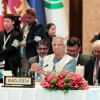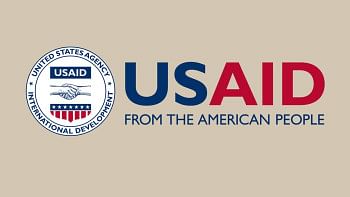Groundwater extractors: Bangladesh among the worst

Bangladesh ranks seven out of 10 countries in the Asia-Pacific region that extract the most groundwater, found a recent report by the UN.
"It is very alarming that the water table is fast depleting fast," said Anwar Zahid, director of groundwater hydrology of the Bangladesh Water Development Board.
Apart from Dhaka, the depletion is also taking place in the surrounding areas of Dhaka and even in some rural areas as well, he told The Daily Star.
"The availability of freshwater would be scarce due to the quick depletion. At the same time, our agriculture and industry would also suffer," Zahid added.
The other six countries are China, India, Indonesia, Iran, Pakistan and Turkey, said the United Nations World Water Development Report 2022 in its annual flagship report styled "Making the invisible visible".
The countries alone account for roughly 60 percent of the world's total groundwater withdrawal, according to the report, which was unveiled yesterday.
Groundwater, which accounts for 99 percent of the planet's freshwater supplies, is poorly understood and consequently undervalued, mismanaged and even abused.
The UN report citing data of 2010 said an estimated 30 cubic kilometres of total groundwater was withdrawn annually in Bangladesh at that time. And nearly 86 percent of the water went for irrigation.
Conservationists and experts, however, referred to a World Bank report in 2018 and said the amount of water being extracted from the ground is estimated to be 32 cubic kilometres annually.
Around 90 percent of the extracted water was used for irrigation and 10 percent for domestic and industrial purposes, said the WB report titled "Multi-Hazard Groundwater Risks to the Drinking Water Supply in Bangladesh".
Groundwater extraction is increasing alarmingly every year, which poses serious threats to the water reservoirs and also increases the risks of droughts and pollution.
Approximately 5 percent to 24 percent of the land area in Bangladesh is exposed to extremely high to high risks of elevated arsenic, salinity and groundwater depletion hazards, according to the WB report.
The report also estimated that 4.5 percent to 17 percent of the total population of Bangladesh are exposed to extremely high to high risks of elevated arsenic, salinity and groundwater depletion hazards.
And about 2.2 million to 8.6 million of these vulnerable populations are poor.
The excessive extraction of groundwater could lead to a drinking water crisis and spread the intrusion of salinity in the coastal areas, said Tanvir Ahmed, a professor of the civil engineering department at Bangladesh University of Engineering and Technology.
"There could be incidents of land subsidence in some areas," he said.
The UN report said groundwater already provides half of the volume of water withdrawn for domestic use by the global population, and about 25 percent of all water withdrawn for irrigation, serving 38 percent of the world's irrigated land.
Groundwater storage depletion occurs when discharge exceeds recharge. Although climate variability and climate change can play a role, most cases of long-term groundwater storage depletion result from intensive abstraction.
The rate of global aggregated groundwater storage depletion is considerable: for the beginning of the present century, the estimates are mostly between 100 and 200 cubic kilometres per year, which accounts for roughly 15 to 25 percent of total groundwater withdrawals, it added.
Bangladesh requires about 2.75 million litres of water per day, 80 percent of which are extracted from the groundwater, according to the Department of Public Health Engineering.
The remaining supply of water is met by the surface water.
Around 90 percent of the country's water is used for farming, 6 percent for industrial and institutional purposes and only 4 percent for drinking and household purposes, said Mohammad Saifur Rahman, Superintending Engineer of groundwater circle of DPHE.
The water table in cities like Dhaka, Chattogram, Khulna, Sylhet, Rajshahi, Barishal, Tongi, Gazipur and Narayanganj depleted significantly as water could be found in these areas after boring more than 200 feet from the earth surface, he said.

 For all latest news, follow The Daily Star's Google News channel.
For all latest news, follow The Daily Star's Google News channel. 








Comments